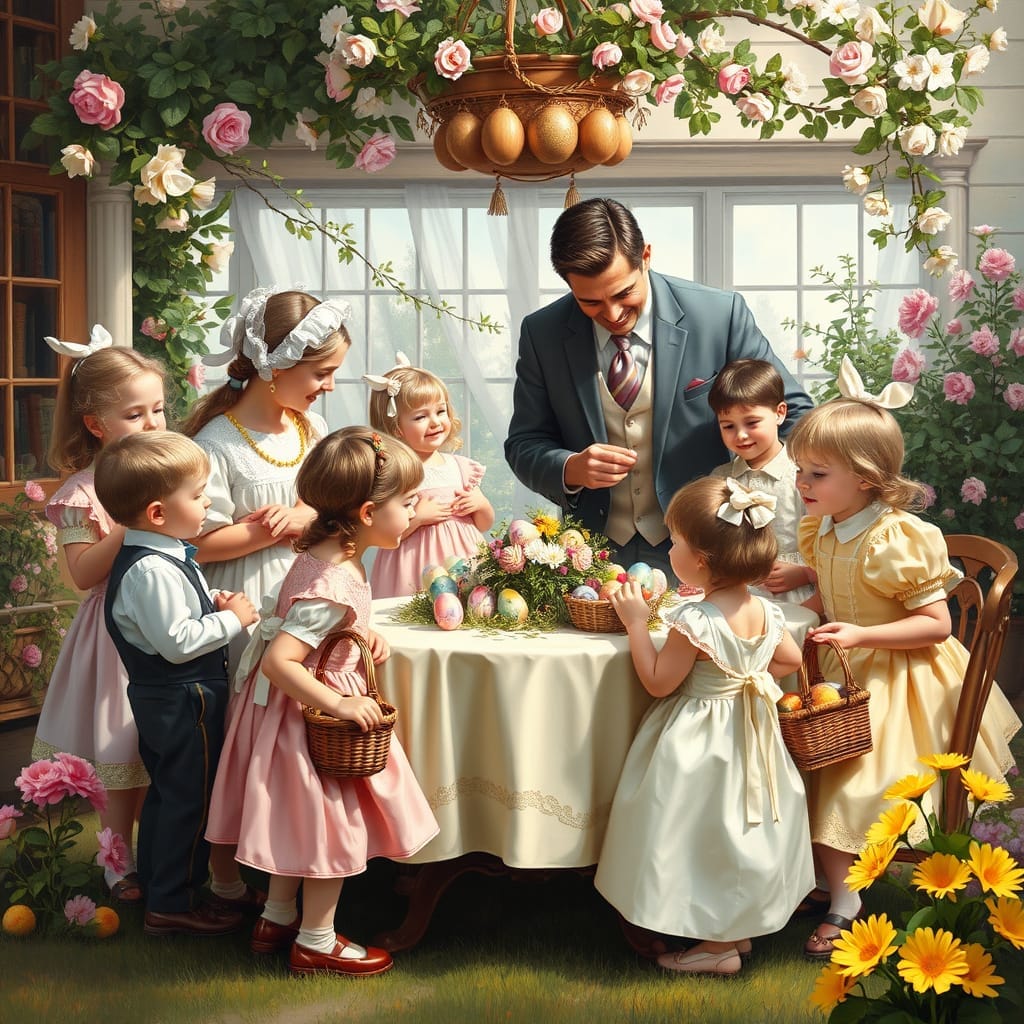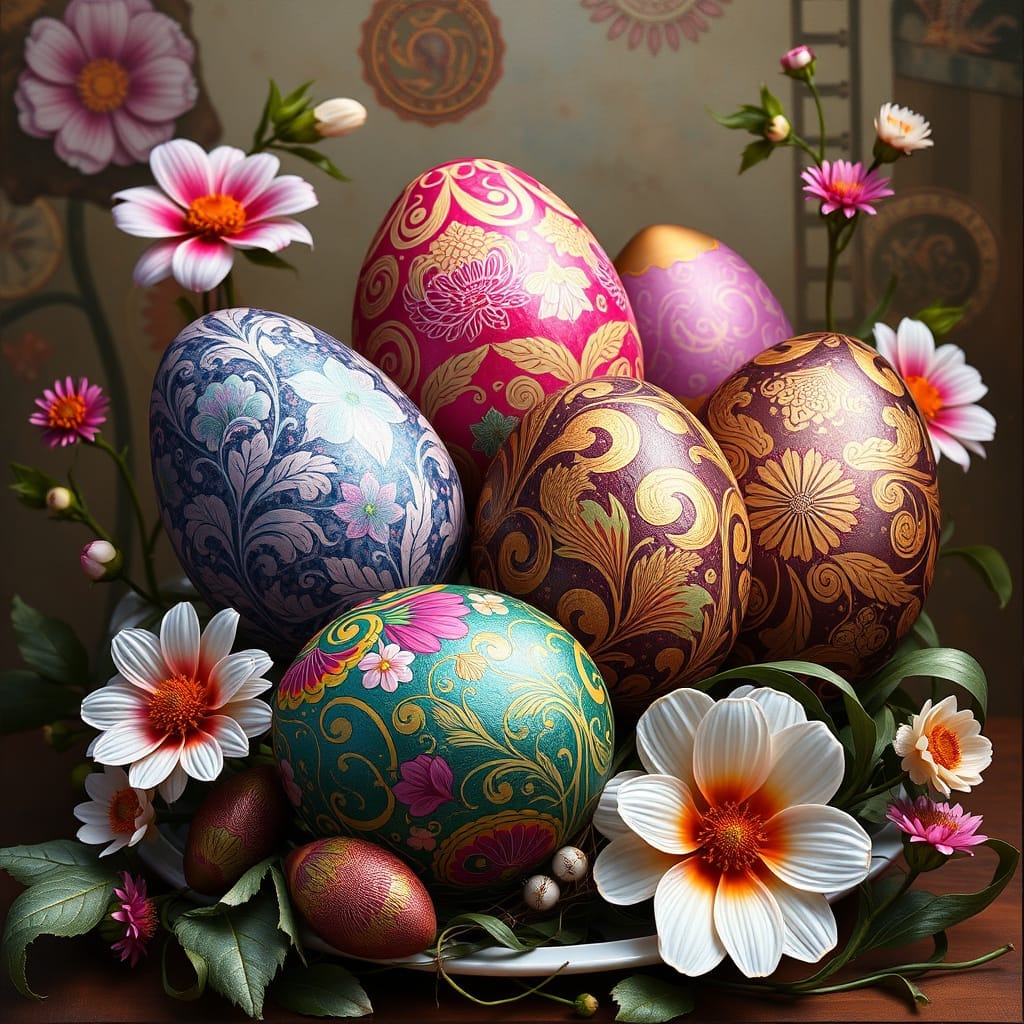Easter Sunday began as a Christian celebration of the resurrection of Jesus Christ, marking his victory over death. It is a day that holds deep religious meaning for millions around the world, symbolizing hope and renewal. This holiday has roots that go back over two thousand years.
People celebrate Easter in many different ways across cultures. Some focus on church services, while others enjoy special meals, egg hunts, and festive gatherings. These customs show how both faith and tradition shape the holiday today.
Understanding how Easter started and what it means helps explain why it remains an important part of the year for many. The various celebrations reflect both old beliefs and modern influences that keep the holiday alive worldwide.
Table of Contents
Key Takeways
- Easter marks a significant religious event with a long history.
- Traditions vary widely but often include symbolic practices.
- The holiday combines cultural customs with spiritual meaning.
Origins Of Easter Sunday
Easter Sunday began as a religious celebration. It marks an important event in Christianity with deep historical roots. The meaning comes directly from ancient stories and early church practices that shaped its significance.
Historical Background
Easter has connections to earlier spring festivals that celebrated new life and renewal. Many of these festivals centered around the changing seasons and the return of warmth after winter. The word “Easter” may come from a pagan goddess named Eostre, worshiped by Anglo-Saxon people.
As Christianity spread, it merged some of these customs with the story of Jesus Christ. By the 2nd century, Christians observed Easter to honor Jesus’ resurrection. The timing of Easter links closely to the Jewish Passover, as the events in the story happened around this festival.
Biblical Account Of The Resurrection
Easter Sunday celebrates the resurrection of Jesus Christ. According to the Bible, Jesus was crucified on Good Friday and rose from the dead on the third day. This event is described in the New Testament books of Matthew, Mark, Luke, and John.
The resurrection is seen as proof of Jesus’ divine nature and victory over death. It represents hope and new life for believers. The Bible tells of several witnesses, including Mary Magdalene and the disciples, who first discovered the empty tomb.
Early Christian Observances
Early Christians marked Easter with special church services and rituals. They held vigils, which included prayers and reading of Bible passages at night, waiting for dawn to celebrate Jesus’ resurrection. Baptism was also an important practice during this time, symbolizing a believer’s new life.
The date of Easter varied because early Christians used different calendars and methods to calculate it. By the 4th century, the Council of Nicaea set a uniform date for Easter as the first Sunday after the first full moon following the spring equinox. This decision helped unify Easter’s celebration worldwide.
Religious Significance Of Easter Sunday
Easter Sunday is central to Christianity because it marks Jesus Christ’s resurrection from the dead. This event carries deep spiritual meaning and shapes many Christian beliefs and practices. Different Christian groups observe Easter in varied ways but share a common focus on Jesus’ victory over death.
Symbolism And Spiritual Meaning
Easter symbolizes new life and hope. Christians see Jesus’ resurrection as proof that death is not the end. This gives believers a promise of eternal life.
Symbols like the empty tomb, eggs, and lilies represent this new life. The empty tomb shows Jesus rose; eggs stand for rebirth; and lilies reflect purity and renewal. These symbols appear in church services and decorations.
Easter encourages believers to renew their faith and live in the light of Jesus’ teachings. It calls for spiritual growth and a deeper connection with God.
Connection To The Paschal Mystery
The Paschal Mystery refers to Jesus’ passion, death, resurrection, and ascension. Easter is the heart of this mystery because it completes the story of salvation.
According to Christian faith, Jesus’ suffering and death paid for human sins. His resurrection is the proof that God accepted this sacrifice. It confirms that evil and death are overcome. This is celebrated as Easter Sunday every year.
During Easter Sunday, many churches focus on this story through prayers, readings, and rituals. It reminds believers they share in Jesus’ victory and offers hope for life after death.
Easter In Different Christian Denominations
Different Christian groups celebrate Easter with unique customs, but all emphasize Jesus’ resurrection.
- Catholics hold a Vigil on Holy Saturday night. They light the Paschal candle, sing, and read scripture to welcome Easter.
- Protestants often have sunrise services, symbolizing the moment Jesus rose.
- Orthodox Christians follow a different calendar, so their Easter date can differ. Their celebrations include a midnight service and the greeting “Christ is risen.”
All denominations see Easter as the most important feast of the church year. It unites Christians around their faith in Jesus’ resurrection.
Easter Traditions Around The World
Easter is marked by different customs depending on the region. Some places focus on religious ceremonies, while others include unique local activities. Food, decoration, and public events vary widely.
Festivities In Europe
In many European countries, Easter is a mix of religious and cultural practices. In Italy, people attend special church services and enjoy feasts featuring lamb and Easter bread called Colomba.
Germany is known for its decorated Easter trees and egg hunts. It also has the tradition of the Easter Fire, where large bonfires are lit to mark the end of winter.
In Spain, dramatic processions called Semana Santa include people in traditional robes carrying religious statues through the streets. These events are important religious observances.
Celebrations In The Americas
In the Americas, Easter traditions vary but often include community gatherings and festive meals. In the United States, Easter egg hunts and the Easter Bunny character are popular, especially for children.
Mexico combines religious ceremonies with lively festivals. The Semana Santa celebrations include reenactments of Jesus’ crucifixion and resurrection. Special foods like sweet bread called pan de muerto accompany the events.
Brazil hosts large church services and public parades. Many people also share traditional dishes like codfish or cakes decorated with Easter symbols.
Practices In Africa And Asia
In Africa, Easter celebrates both church and cultural traditions. For example, in Ethiopia, Orthodox Christians observe Easter with long fasting before the holiday and colorful church services.
In South Africa, Easter often includes outdoor church services and family barbecues called braais. Decorating eggs is less common than in Western countries.
In parts of Asia, such as the Philippines, Easter Sunday is a deeply religious event marked by Masses and processions. Some regions hold festive parades, while others keep the day solemn and reflective. Food and family gatherings follow these ceremonies.
Common Easter Symbols
Easter uses several important symbols that connect to its history and meaning. Each symbol shows a different part of the holiday’s story or tradition and is used in celebrations worldwide.
Easter Eggs
Easter eggs represent new life and rebirth. People dye, paint, and decorate eggs in bright colors during Easter. The practice started in ancient times when eggs symbolized fertility and renewal.
In Christianity, eggs remind people of Jesus’ resurrection from the tomb. Some customs include Easter egg hunts, where children search for hidden eggs. Eggs can be real, chocolate, or plastic filled with treats.
The egg’s shell also symbolizes the sealed tomb of Jesus. Breaking the shell represents Jesus rising from the dead. This makes eggs a powerful icon during Easter.
The Lamb
The lamb is a key religious symbol linked to Jesus, often called the “Lamb of God.” It stands for sacrifice and purity. This comes from the Bible, where lambs were used for religious offerings.
In Easter, the lamb reminds people of Jesus’ sacrifice for humanity. Many families include lamb dishes at Easter meals to honor this tradition.
The lamb also signifies innocence and new life. In some countries, lamb decorations or cakes shaped like lambs are common. This symbol connects Easter to both faith and festive food.
Easter Bunny
The Easter Bunny is a popular figure in many Easter celebrations. It is a rabbit that brings Easter eggs, candy, and gifts to children. The idea comes from pagan symbols of fertility and new life.
The rabbit’s fast reproduction links it to spring and fertility themes. This made it a natural symbol during the season.
The Easter Bunny tradition began in Europe and spread worldwide. Today, children often receive chocolate bunnies or visit Easter Bunny events. It adds fun and excitement to Easter celebrations.
Modern Ways Easter Is Celebrated
Easter is marked by special church services, shared family meals, and community activities. These customs blend religious meaning with social traditions. People often come together to honor the day in ways that are both meaningful and joyful.
Church Services And Religious Rituals
Many attend church services on Easter Sunday. These services often begin early in the morning with sunrise ceremonies. Churches hold prayers, hymns, and sermons that focus on the resurrection of Jesus.
In some places, people take part in processions or reenactments of biblical events. Holy Communion is a common ritual symbolizing Jesus’ sacrifice. Churches may also decorate with lilies and other flowers as symbols of new life.
Family Gatherings And Meals
Families often gather to share meals after church. Traditional foods vary by culture but often include ham, lamb, or special breads. Easter eggs, both real and decorated, are popular at the table.
Children usually hunt for hidden eggs filled with candy or small toys. These hunts add fun to the day and keep traditions alive. Sharing stories and spending time together is a central part of the celebration.
Community Events
Many towns organize events open to the public. These can include egg hunts in parks, fairs, and parades. Some places have contests for decorating eggs or baking.
Communities may also hold charity events or volunteer activities. These efforts help spread the holiday’s message of hope and renewal beyond families to all people.
Cultural Adaptations And Contemporary Trends
Easter traditions have changed over time to fit modern tastes and lifestyles. These changes include ways people buy Easter items, how non-religious groups celebrate, and how customs from different countries blend together.
Commercialization Of Easter
Easter has become an important holiday for businesses. Stores sell chocolate eggs, candy, toys, and decorations. In the U.S., Easter generates billions in sales each year through candy and gifts.
Advertising often focuses on colorful eggs and bunnies, rather than the religious meaning. Many companies release limited-edition products to attract buyers.
Some critics say this focus on shopping shifts attention away from Easter’s original religious purpose. Still, for many people, buying gifts and sweets is part of their holiday fun.
Secular Celebrations
Not everyone celebrates Easter as a religious event. Many take part in cultural Easter activities like egg hunts and parades.
Egg hunts, where children search for hidden eggs, are popular in parks and community centers worldwide. Parades, such as the Easter Parade in New York City, showcase festive clothes and family gatherings.
These secular traditions emphasize springtime, renewal, and family time. This helps make Easter enjoyable for people of many beliefs.
Globalization Of Easter Customs
Easter customs mix and change as people move and share traditions globally. For example, the German tradition of decorating trees with eggs is practiced in the U.S.
In Australia, the Easter Bilby replaces the Easter Bunny to raise awareness about native wildlife. In some Asian countries, Easter events include both Christian services and community festivals.
Global travel and the internet spread these customs, making Easter celebrations more diverse and interconnected across cultures.
| Custom | Country Origin | Global Spread |
|---|---|---|
| Egg decorating | Europe | U.S., Australia, Canada |
| Easter Bilby | Australia | Educational programs worldwide |
| Easter parades | U.S., Europe | Canada, parts of Asia |
| Egg hunts | Western countries | Many countries in various forms |
Easter’s Impact On Society
Easter has shaped many cultural and social traditions worldwide. It influences how communities come together to celebrate life, renewal, and hope.
The holiday boosts local economies through sales of gifts, decorations, and food. Many stores and markets see a rise in business before and during Easter.
Schools and families often plan special activities such as egg hunts and church services. These events promote social bonding and shared experience.
Easter also affects the calendar of public holidays in many countries. People get time off work to attend religious ceremonies or spend time with family.
| Aspect | Impact |
|---|---|
| Economy | Increased sales in food, gifts, and decor |
| Education | Holiday-themed lessons and activities |
| Community | Social events and family gatherings |
| Religion | Church services and spiritual reflection |
Many charities use Easter to raise awareness and funds to help those in need. This support highlights values of kindness and generosity linked to the season.
Overall, Easter plays a role beyond religion. It influences cultural habits, business, education, and social care across diverse societies.








